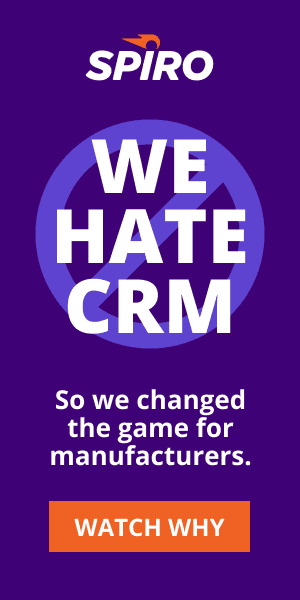Give Up the Spreadsheet and Modernize Your Sales Process

If your team uses spreadsheets to keep track of your forecast and other sales data, moving onto a sales platform may seem overwhelming. At Spiro, we want to ensure that even companies that haven’t previously used a sales tool are able to get up and running quickly and painlessly with our AI-driven CRM.
Here are 6 strategies for setting up Spiro if you’ve never used a sales platform before (which means you’re probably using a spreadsheet instead).
1. Keep your key metrics in mind
When you’re adopting a sales platform for the first time, you should identify the key metrics you want to be tracking. Decide what you want to know about your pipeline, sales activities, and customers. The end goal of collecting this data is to understand something about your team and to learn from the data. So, determine what your goals and objectives are and the key performance indicators you want to measure that will allow you to achieve this, and keep your eye on the prize.
If you can, start small. If you aren’t exactly sure what you need to be tracking, simply focus on getting visibility into your prospects and customers. It’s easy to add data later. And, by using only data from your pipeline, you can build a variety of different reports that will provide valuable insight into your business, such as an “opportunity risk” report to help you identify deals that could slip through the cracks. Avoid the temptation to add a ton of fields. You don’t want to overwhelm your team with information overload. Instead, serve up the key insights based on the core set of data that’s most essential and allow your team to experience the value themselves.
2. Begin with a simple use case
Start simple from a use case perspective, like automatically collecting information on prospects to improve your data set, or automatically tracking your deal progression to provide a more accurate forecast. If you’ve never used a sales platform, there can be a bit of getting used to in the first few weeks or months after adoption. Allow yourself and your team time to become familiar with the basic functionality of Spiro first, then down the line you can start using all the comprehensive features offered.
Decide what processes your team follows most frequently and streamline those in Spiro first. Once you find the flow and work through any obstacles of those, you can begin adding additional use cases to the workflow
3. Align Spiro with your sales processes
When adopting a new system, it’s important to embed it into your weekly processes, so that it becomes a part of your reps’ daily lives. Make sure that Spiro becomes a seamless part of any weekly rituals. For example, run your forecast and pipeline meetings out of Spiro reports. The more familiar your reps are with the platform, the better.
This helps them understand what they are managing towards and shows them the immediate benefits of the system to ensure adoption. It will also help you easily visualize and track over time the most critical details of your business and team’s productivity.
4. Start with active opportunities
If you don’t have clean data at your disposal, simply start with active opportunities. It’s unlikely that a phone call made by a sales rep four years ago matters in the grand scheme of things. Adding your active opportunity pipeline into Spiro will generally give you more than enough information to start. And, as you use Spiro, you’ll be collecting tons of data in real time — all of which will be current, clean and easy to use.
It’s quite simple to add data into Spiro at a later date. Don’t overcomplicate things or waste time trying to figure out messy historical data. Save yourself a huge headache by using only what’s really important to the business today.
5. Find your point person
When onboarding your team, it can be helpful to have someone from your team that can devote time to the project and be the point person for the team over the course of your Spiro implementation. This person should have knowledge of your sales process and core objectives for adopting CRM.
Your point person will understand any process changes that may come with adoption, and help reps make the transition. They’ll also be aware of any challenges the team is facing and keep the lines of communication with Spiro open so we can address them immediately together.
6. Leverage the experience of those who’ve gone before
Lean on your Spiro customer success manager to guide you through the process. The customer success team at Spiro has moved many different companies from a wide variety of industries onto the platform. It’s more than likely that they know your use case extremely well and understand how you can best use the platform.
If you’re not sure what data to pull into Spiro, or what fields to enter, your customer success manager will advise you on what will be a good fit for your business. They’ll make sure that the platform aligns with your sales process, so your sales team can focus on what they do best – selling! The team can also help integrate Spiro with your business systems – from marketing automation to ERP to quoting applications.
Say goodbye to spreadsheets
Many sales tools are almost impossible to figure out if you’re starting from data in a spreadsheet. That’s why Spiro created a better approach that’s proactive, intuitive, and user-friendly. Plus, our world-class customer success team is ready to help you get started and Spiro offers the industry’s only 100% adoption guarantee to back it all up.

